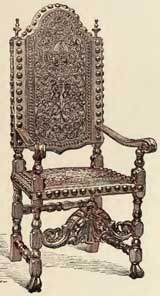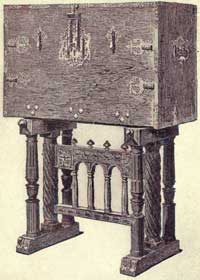Spanish Furniture
Gothic style
The Gothic Spanish furniture belongs to what we may call the without-border Gothic, the European furniture style of the 15th Century. Its construction and ornamentation resembles the French and Flemish furniture of the time.
However, there was something particular about the Spanish style, and that was the Moorish element. In Spain, the Moorish feeling was still stronger than the Gothic, and it will survive until the 17th century.
The Renaissance
During the Renaissance period, the making of furniture in Spain was influenced by the Italian style. Initially, the influence was not direct, as it came mostly from across the Pyrénées, from France. In the same time, the Spanish possessions in the Low Countries became the source of a great number of Flemish craftsmen working in Spain.
The pieces executed in Spain borrowed even more from the Italian Renaissance furniture when Spanish artists went to study in Italy. Berruguete had the chance to study in the studio of Michelangelo. The year of his return, 1530, is the year marking the end of the pure Gothic carving in his country, and is marking the start of a brilliant epoch of wood sculpture in the 16th century Spain. Berruguete had the main role in imposing the Italian style, with the choir of the Cathedral in Toledo being the finest example.

Spanish Chair, walnut-Early 17th Century
During the 16th century, despite the import of furniture artists from France and Flanders, the Moorish elements persisted, side by side with the Renaissance motifs. The Renaissance character became predominant only in the 17th century. The furniture styles of the German, Spanish, and the Flemish Renaissance were all closely related.
Characteristic for the furniture of the period is the refinement and skill denoted by the painted and gilded wood decorations.
Wood used
The furniture was made mostly of walnut, of which Spain is so rich. The Spanish walnut was preferred due to its close grain, and lustrous surface. Cedar, cypress, and pine were mainly used for the figures. Oak was scarce, and had to be imported from France and England.
The Flemish craftsmen introduced the art of inlaying with ebony, or ivory. Cabinets of walnut were ornamented with inlaid ebony, and covered with repoussé silver-work (silver was used to a great extent after the conquest of America), and, later, of tortoise-shell. Rare woods were brought from the Spanish possessions overseas, but walnut still remained the favorite furniture wood.
Furniture pieces
The Spanish vargueno cabinet or vargueño has an austere form, obviously derived from the chest. The chest box was usually sustained by a carved trestle stand. The front-fall has a flap which lets down, revealing the rows of little drawers inside, and the elaborate interior ornamentation, composed of colonnades and arcatures, is in strong contrast with the austere look when the cabinet is closed.
A popular item of Spanish furniture was the high-back chair. The Spanish high-back chair was of Flemish origin, modified with hoof feet, and covered in dark-brown Cordova leather, with embossed patterns.

